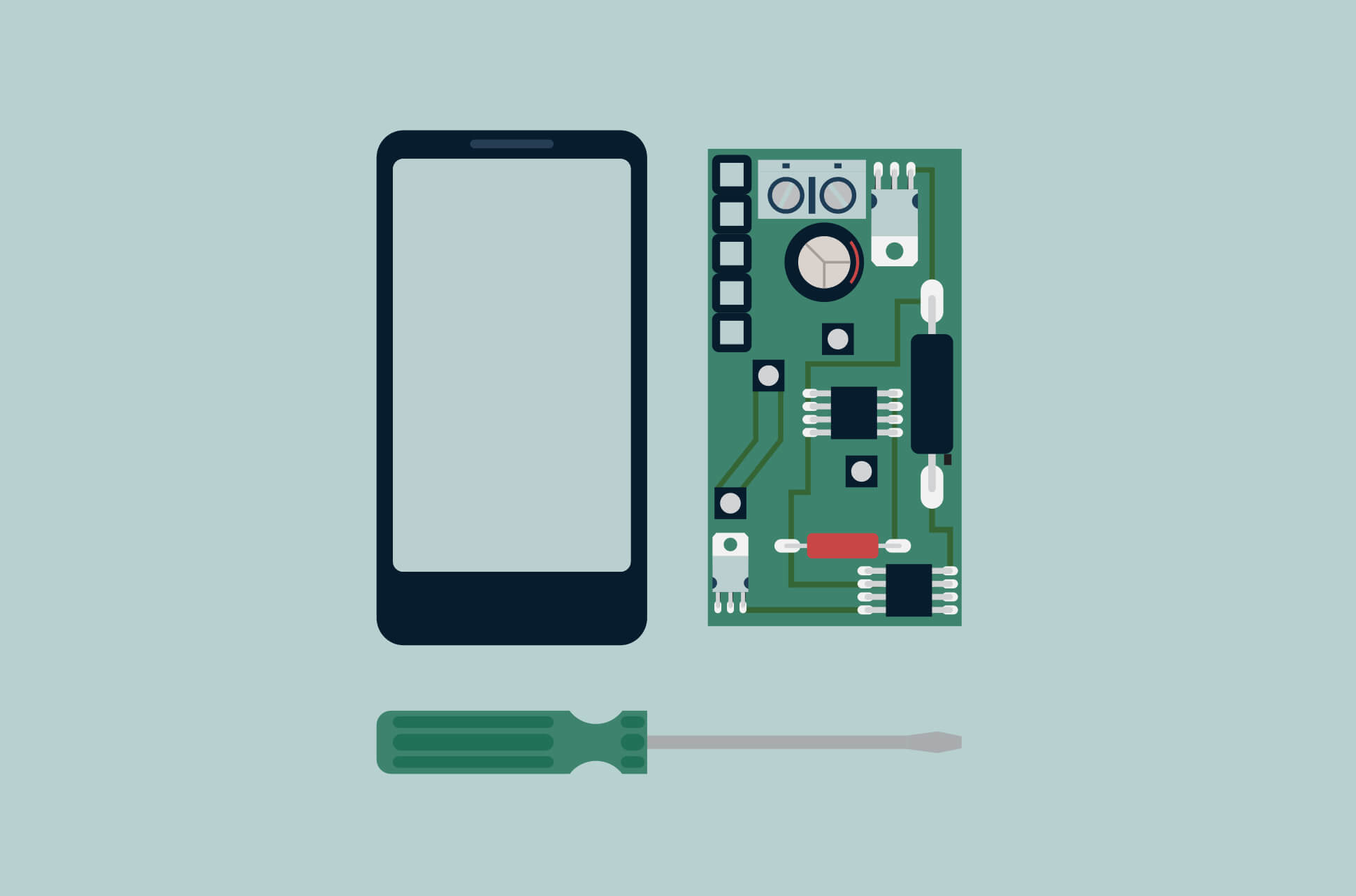Lockdowns highlight the need to repair devices ourselves


This post was originally published on August 19, 2020.
Since the shift toward remote work and virtual hangouts and meetups, we’ve become evermore dependent on our devices. Phones and laptops have been the only connections to work, friends, and family for many spending much of their time at home.
In perhaps simpler times, if your device started malfunctioning or broke down you’d have to take it to the nearest licensed technician (or Apple store) to get a quick fix. But the pandemic has forced tech companies and repair shops alike to close down, restricting users from getting their devices fixed.
[Keep up with the latest in technology and security. Sign up for the ExpressVPN blog newsletter.]
The total reliance on electronic devices coupled with the restricted options for device repairs leaves consumers without a functioning device that has become their lifeline during a pandemic. So that leaves us with the burgeoning question:
Why can’t we fix our devices ourselves?
Even before the pandemic, you’d be hard-pressed to find a way to do DIY repairs on your own devices. Companies don’t make separate parts to their devices publicly available for purchase, holding complete control over where those parts get distributed to, and to whom.
This has frustrated users who, after finding fault in products and want to repair them themselves, can’t do so unless they go through the original manufacturer. Video game consoles and Apple devices have drawn attention to themselves for being particularly difficult to get repaired outside of their own stores—you may recall Apple deliberately slowing down its batteries in older phones and forcing users to buy replacements. This isn’t just an issue among hand-held devices either; car and tractor manufacturers have also been restricting the owners’ ability to repair their own vehicles.
The hurdles manufacturers put in front of consumers to access parts to repair their own items has spurred support for the right for users to be able to repair their own devices without having to go directly to the device manufacturer.
The right to repair what you own
The right to repair movement has been around since 2013. Proponents fight for the greater general ease of users to fix their own devices, whether it’s an old click-wheel iPod or a phone you just dropped on the floor.
While you legally have the right to repair these devices, manufacturers make it very difficult for third party vendors to acquire parts for repairing broken devices at cheaper rates, leaving users dependent on a single, more expensive source—the original manufacturer.
Such manufacturers are even actively trying to shut down repair shops for selling aftermarket parts, like this Norwegian repair shop that Apple successfully sued earlier this year. And while Apple rolled out its repair program for iPhones in August last year, and recently expanded it to include Macs, the fact that this makes news at all highlights how novel this seemingly obvious concept still is.
Amid legal setbacks, there are still efforts to empower consumers with practical guidance on fixing their own devices. Websites like iFixit, which publish guides for repairing a myriad of malfunctioning devices, cover phone cameras and screens, old game consoles, and, perhaps more pertinent, medical devices.
Several governments have also been taking additional steps, introducing and advocating for legislation that will give greater access to aftermarket parts to repair old devices. The EU for instance adopted new repairability requirements for household appliances that are to be enforced from 2021. In the U.S., 20 states have introduced bills to discuss what meaningful Right to Repair laws could look like.
If it’s broken, I should be allowed to fix it
Critics of repair laws will often argue that these laws will require companies to compromise on their intellectual property. But accessing a visual breakdown of a device’s components and accessing physical parts to repair it is not equivalent to replicating the device itself.
Stopping users from accessing information and tools required to repair our own devices makes us particularly vulnerable during a time when our main sources for maintaining our devices—brands’ own service outlets—are closed down.
Take the first step to protect yourself online. Try ExpressVPN risk-free.
Get ExpressVPN



